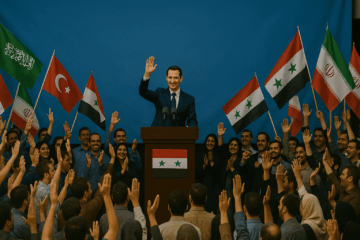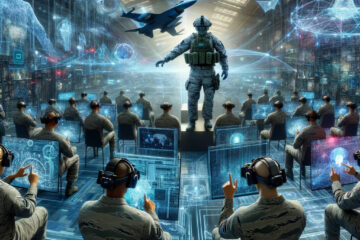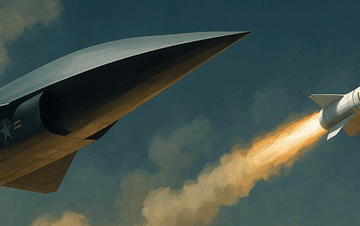Almost eight decades ago today, on August 6, 1945, the world entered the nuclear era when an American B-29 Superfortress bomber dropped an atomic bomb on the Japanese city of Hiroshima. The first use of an atomic weapon set into motion the events that led to Japan’s surrender—without the large loss of American life.
The use of atomic weapons on Japan by the United States was the culmination of the Manhattan Project’s extraordinary technological achievements. The decision to use these weapons came after US Army and Navy estimates of a protracted invasion of the Japanese home islands (Kyushu, Shikoku, Honshu, and Hokkaidō) offered casualty ranges from the tens to hundreds of thousands. If the Japanese fought as hard on their own home territory as they fought for Okinawa, for example, there was real concern that the loss of American life would eclipse that seen in Europe.
Additionally, the estimated losses on the Japanese side were five to ten times that of the United States. Japanese tenacity and refusal to surrender in the face of certain defeat was both hated and admired by American troops.
At the time of Germany’s defeat on May 7, 1945, the United States was five weeks into one of the bloodiest fights of the entire war, the battle for Okinawa, which cost more than 50,000 American casualties before the island was taken in late June. Only after the war did it come to light that more than 110,000 Japanese soldiers and 150,000 Okinawan civilians died in the battle. About half of Okinawa’s pre-war population was killed during the battle, sometimes at the hands of Japanese soldiers.
For the military commanders of the war in the Pacific, Okinawa demonstrated a stark example of the Japanese resolve and willingness to fight and die. It should come as no surprise that President Harry Truman, a World War I veteran, understood the difficult decision required to take provocative actions to save American lives. While this was not a war the Americans started; it was a war we had to win—without conditions.
Scholars and non-scholars alike may continue to debate the moral, ethical, and legal justifications of the use of the atomic bomb, but there is little doubt that the men assigned to military units waiting for the invasion to begin were happy to know that the atomic bomb made the loss of their own lives unnecessary. Their families were certainly happy as well. In the articles that often appear on the anniversary of Hiroshima, there is often a lack of understanding of the American lives (and Japanese) that were saved by the use of the atomic bomb.
The Manhattan Project began because the United States feared Nazi Germany would successfully develop the bomb first. With Germany falling to the allies in May 1945, just months before the bomb was ready, it was a logical transition for the target of the A-bomb to shift from Europe to Japan. The weapon, originally designed to counter a German threat, became the best option to quickly end the war in the Pacific.
Often, the articles commemorating the use of an atomic bomb on Hiroshima repeat inaccuracies and leave out important facts. For example, it is common to suggest that the detonation of Little Boy directly caused all of the devastation experienced in Hiroshima. However, approximately 80 percent of the death and devastation in Hiroshima was caused by the fire that began with the detonation and spread far beyond the area directly affected by the bomb. This same level of damage would have been realized with one of Curtis LeMay’s conventional fire-bombing raids because Japanese buildings were in close proximity to one another and made of highly flammable wood and paper. The blast effects of the bomb, while dramatic, were not the leading cause of destruction and loss of life—as is normal with a nuclear detonation.
In retrospect, the American firebombing of Tokyo was far more destructive of life and property than either atomic bomb. Little Boy was detonated at such a high altitude, about 1,400 feet above ground zero, that its damage was limited.
The decision to drop the atomic bomb on Hiroshima was a sound military decision that took the best military advice, applied casualty estimates for a future fight to the equation, and reached a sound decision. The atomic bomb did exactly what President Truman and General Marshall desired—end the war as quickly as possible with the least loss of American (and Japanese) life.
The loss of an estimated 150,000 Japanese lives in Hiroshima and Nagasaki was tragic, but more than justified by the American lives saved. This number, however, in comparison to the estimates of over a million Japanese and American lives that were projected to be lost in an invasion drives a different conclusion and deeper reflection than numbers alone.
The benefit of hindsight to those who challenge the use of the atomic bomb on Hiroshima often forget that there were real American soldiers, sailors, airmen, and marines (as well as Japanese military and civilians) who would have died by the hundreds of thousands had the war continued. War is a terrible thing, and, paradoxically, the dramatic use of the atomic bomb, while taken as a single event appears horrific, in contrast to the larger landscape of lives saved demonstrates a justified use that saved lives in the end. Because of this, American warfighters returned home to start lives, get married, raise children, and pursue lives that may very well have ended with a bullet or bomb in Japan.
USAF Col (Ret) Paul Hendrickson, PhD, is a Fellow at the National Institute for Deterrence Studies. The views expressed are his own.




